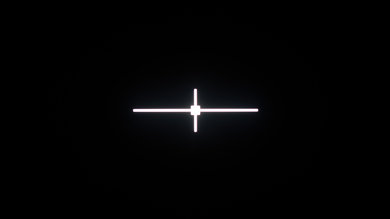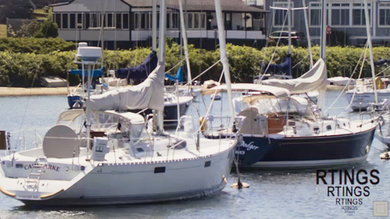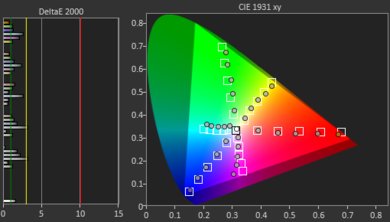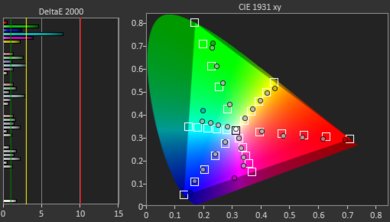Our Verdict
The Vizio P Series Quantum X is an excellent TV for most uses. It looks great in almost any room but has narrow viewing angles, so it isn't as good for watching sports with a group of friends or playing co-op games. Fast movies and games look great, thanks to the fast response time, and games are responsive due to the low input lag.
- Outstanding peak brightness in SDR and HDR.
- Deep, uniform blacks.
- Great motion handling.
- Image degrades when viewed at an angle.
This is an excellent TV for watching movies in a dark room. It has an excellent contrast ratio and a great local dimming feature, so it delivers deep, uniform blacks. Fast-moving action scenes look great, with very little blur, thanks to the fast response time, although this lack of blur does result in a bit more noticeable stutter. This TV also gets extremely bright in both SDR and HDR. Unfortunately, lower resolution movies don't look quite as good, as the 480p upscaling isn't as good as most other TVs.
The is a great TV for watching your favorite TV shows during the day. It has excellent reflection handling and can get extremely bright, so glare should never be an issue, even in an extremely bright room. This TV also has a good selection of built-in apps, covering some of the most popular streaming apps, but it isn't possible to add more apps. Unfortunately, due to the poor viewing angle, this TV is best enjoyed from directly in front, so it isn't a great choice if you like to move around with the TV on. Cable content also doesn't look quite as good on this TV, as the 720p upscaling isn't as good as most other brands.
Overall, this is a great TV for watching sports. The P Series Quantum X can get extremely bright and has great reflection handling, so there shouldn't be any issues with glare in a bright room. It has an excellent response time, so fast-moving objects, like the players, look great, with very little blur behind them. Unfortunately, this TV isn't well-suited for watching the big game with a group of friends, as the image degrades when viewed at an angle.
This is an excellent TV for playing video games. It has excellent low input lag for a responsive gaming experience, and it delivers very smooth motion with very little blur behind fast-moving objects. This TV also looks great in almost any room, as it can easily handle glare in a bright room, and also has excellent contrast for late-night gaming. Unfortunately, it doesn't support any advanced gaming features, like FreeSync. This TV also isn't as well-suited for co-op gaming, as the image degrades when viewed at an angle.
The P Series Quantum X is an excellent TV for watching HDR movies in a dark room. It looks great in a dark room, as it has excellent contrast and a great local dimming feature. This is a remarkably bright TV, and small highlights in some scenes in HDR really stand out, the way the creator intended. This TV also has an outstanding color gamut and great color volume. Fast-moving objects look great, thanks to the fast response time, but this does result in a bit more noticeable stutter when watching movies.
This is an excellent TV for HDR gaming. It has excellent low input lag, delivering a responsive gaming experience, and fast-moving objects in your favorite games look great, thanks to the fast response time. HDR games can get extremely bright, and they look great in a dark room, thanks to the excellent contrast ratio. Unfortunately, it lacks any advanced gaming features, like support for FreeSync variable refresh rate.
Overall, this is an excellent TV for use as a PC monitor. It has a fast response time, so there is little distracting blur trail around fast-moving objects, and it has excellent low input lag for a responsive experience. It can also get extremely bright and has excellent reflection handling, so it has no issues overcoming glare. Unfortunately, this TV has a poor viewing angle, and the sides of the screen appear non-uniform if you're sitting too close.
Changelog
- Updated May 21, 2020: Converted to Test Bench 1.5.
- Updated Feb 21, 2020: Converted to Test Bench 1.4.
- Updated Jul 08, 2019: Review published.
- Updated Jul 06, 2019: Our testers have started testing this product.
Check Price
Differences Between Sizes And Variants
We tested the 65" Vizio P Series Quantum X (PX65-G1), and we expect our results to be valid for the 75" (PX75-G1) model as well.
If someone comes across a different type of panel or if their Vizio P Series Quantum X doesn't correspond to our review, let us know and we will update the review. Note that some tests, such as the gray uniformity, may vary between individual units.
| Size | Model | Dimming Zones |
| 65" | PX65-G1 | 384 |
| 75" | PX75-G1 | 480 |
We don't know the manufacturing date of our PX65-G1, but the label is available here.
Popular TV Comparisons

The Vizio P Series Quantum X is an excellent TV for most uses, and it outperforms many pricier models. See our recommendations for the best TVs, the best 4k TVs, the best 4k gaming TVs.
The Vizio P Series Quantum X 2019 and the Vizio P Series Quantum 2018 are nearly identical. The Quantum X has a slightly wider color gamut. The Quantum X has nearly double the local dimming zones, and although the overall performance is similar, the new model has less noticeable blooming around bright objects. Any other differences between them can larger be attributed to panel variance, and do not necessarily represent a real difference.
The Vizio P Series Quantum X 2019 is a bit better than the Vizio P Series Quantum 2019. The Quantum X has a better anti-reflective coating, so glare is less of an issue in a bright room, and the Quantum X is a lot brighter, and HDR content looks much closer to the content creator's intent.
The Vizio P Series Quantum X 2020 is marginally better than the Vizio P Series Quantum X 2019. The 2020 model has better gray and black uniformity, and its input lag is significantly lower. On the other hand, the 2019 model has a higher contrast ratio, better local dimming, and faster response time.
The Vizio P Series Quantum X 2019 is a bit better than the Vizio P Series 2018. The X 2019 can handle reflections a little better when in a bright room. It has more dimming zones, which results in better contrast with local dimming, which is important for dark room performance. The X 2019 can also get much brighter in HDR.

We buy and test dozens of TVs yearly, taking an objective, data-driven approach to deliver results you can trust. Our testing process is complex, with hundreds of individual tests that take over a week to complete. Most of our tests are done with specially designed test patterns that mimic real content, but we also use the same sources you have at home to ensure our results match the real-world experience. We use two main tools for our testing: a Colorimetry Research CR-100 colorimeter and a CR-250 spectroradiometer.
Test Results

The Vizio P Series Quantum X is Vizio's top TV for 2019, and is the direct replacement for the 2018 Vizio P Series Quantum. The main competitors from a performance standpoint are the Samsung Q80R, the Samsung Q90R, and the Sony X950G.
The Vizio P Series Quantum X has a great design, and is identical to last year's Vizio P Series Quantum. The stand has a nice metal finish and supports the TV well, but the two feet are nearly the full width of the TV, so you'll need a wide stand if you aren't VESA mounting it. This TV, like last year's, has very good build quality, with no obvious points of concern.
The back of the TV is plain, made up of a single textured plastic panel. The inputs face down and to the side, and they are easy to access when the TV is VESA mounted.
Unfortunately, there is no cable management.
The P Series Quantum X has an outstanding native contrast ratio and delivers extremely deep blacks, even with the local dimming feature off. With local dimming enabled, the contrast ratio is one of the best we've ever measured, similar to the 2018 Vizio P Series Quantum and the Samsung Q9FN.
Update 07/16/2019: Text updated to clarify settings.
The full array local dimming feature is extremely effective at dimming dark areas on the screen and is one of the best we've ever seen. It reacts quickly to fast scene changes, but can't always keep up, and it tends to dim the outside edges of bright, fast-moving objects, which can be noticeable in some scenes.
There is noticeably less blooming around bright objects than last year's model. There can still be some noticeable blooming around subtitles in dark scenes though, as well as around very bright objects in dark scenes, but it's better than previous models.
If you enjoy local dimming and don't mind some variation in screen brightness or blooming, then set local dimming to 'Medium'. This does increase the overall brightness of the image, though, and can result in distracting blooming around bright objects. If you prefer a less aggressive local dimming implementation or find the brightness too high after decreasing the 'Backlight' then set it to 'Low', or disable local dimming completely if you don't like the changes in brightness.
The setting that controls the backlight is known as Active Full Array. During testing, we discovered that adjusting this setting sometimes caused the Black Frame Insertion feature to be disabled.
Note: The 75" model has more dimming zones, and we expect the local dimming feature to perform slightly better.
The 2019 Vizio P Series Quantum X has outstanding peak brightness in SDR, very close to the Sony Z9F and 2018 Vizio P Series Quantum.
We measured the peak brightness after calibration, with the 'Calibrated Dark' Picture Mode, Local Dimming set to 'Medium', and the Color Temperature set to 'Normal'.
If you prefer a brighter image, or a colder color temperature over an accurate one, with the 'Standard' Picture Mode we measured a peak brightness of 2922 cd/m² for a short period of time, as measured on the 10% test window.
By design, the TV dims when it detects a static pattern, including our test patterns. Vizio sent us instructions on how to work around this, but we were still unable to get consistent results, as the TV's brightness is very finicky.
This TV can get extremely bright in HDR. Small highlights in some scenes are extremely bright, which is great. Even large, bright scenes are very bright, although not quite as bright as last year's model.
We tested the HDR peak brightness with no calibration settings, using the 'Calibrated Dark' Picture Mode, with the Backlight set to '50', and local dimming set to 'Medium'.
If accuracy isn't as important to you, or if you prefer a colder color temperature, the 'Standard' Picture Mode hit a peak brightness of 2741 cd/m² for a short period of time, with the Color Temperature set to 'cool', and local dimming on 'High'.
By design, this TV dims the screen when it detects static images, like our test patterns. Vizio sent us instructions on how to work around this, but we still weren't able to get consistent results.
Decent gray uniformity, but the sides of the screen are noticeably darker. There is also noticeable dirty screen effect (DSE) in the center of the screen, which isn't great for watching sports. In near-dark scenes, the uniformity is much better, with no significant issues.
The P Series Quantum X has a poor viewing angle. Moving off-center, the image loses brightness, and the black level increases, causing the image to appear washed-out. At even moderate angles colors lose accuracy and appear washed-out.
Like the Vizio P Series Quantum, this TV has an optional 'Enhanced Viewing Angle' feature, which is intended to improve viewing angle performance. We measured both and found no advantage for enabling this feature. When it is enabled, it changes the TV's sub-pixel dimming, which reduces the overall color resolution and causes some noticeable issues.
During testing, when changing inputs the Enhanced Viewing Angle function would engage itself automatically, but the setting still shows 'Off'. To disable it, we had to turn it on, then off again.
Great black uniformity, which is great for dark-room viewing. With local dimming disabled, there is some very slight clouding visible. Once local dimming is enabled, though, the black uniformity is significantly better, and there is no noticeable clouding around the white test cross.
With our pre-calibration settings, this TV has decent accuracy. There are some noticeable color inaccuracies, and there are noticeable inaccuracies in brighter shades of gray. The average gamma is close to the calibration target of 2.2, but some scenes are over-brightened, and some are too dark.
This TV has a full white balance and color calibration system, and after calibration, it has outstanding accuracy. Color and white balance accuracy are both significantly improved, and any remaining inaccuracies aren't noticeable. The color temperature is close to our target of 6500K, and gamma follows the target almost perfectly.
You can see our recommended settings here.
4k content looks great. When the TV's Enhanced Viewing Angle feature is enabled, the TV uses spatial dithering, which can cause issues with some content, as shown by the shadows in this image.
This TV also always applies an edge enhancement, even when Sharpness is set to '0'. This results in some noticeable issues, as seen here.
When the enhanced viewing angle feature is enabled, some subpixels are partially dimmed, as shown here.
The P Series Quantum X has an outstanding color gamut, one of the best we've ever measured. It covers almost the entire DCI-P3 color space, and has the best Rec. 2020 coverage of any TV we've tested so far.
Some dark scenes appear too dark, but otherwise this TV follows the PQ EOTF curve well, before tone-mapping near the TV's peak brightness. In 'Game' mode, the EOTF is identical.
If you find HDR too dim, check out our recommended settings here. With these settings, HDR content appears much brighter on the Vizio P Series Quantum X 2019, as shown here.
Update 08/19/2019: We updated the firmware to version 3.0.8.2-1 and retested the gradients. There is slightly less banding in all colors, but not enough to make a noticeable difference.
Decent gradient handling, but there is mild banding in almost all shades, and there is more significant banding in dark greens and grays. Unfortunately, the Reduce Noise feature does not appear to improve gradients at all.
There is no noticeable image retention on the PX65-G1, even immediately after displaying our high-contrast test image for 10 minutes.
We don't expect VA panels to experience permanent image retention, as the VA panel in our long-term test appears immune.
The Vizio PX65-G1 has an excellent response time, very similar to last year's model. There is some overshoot in some transitions, which can cause some inverse ghosting, but this shouldn't be that noticeable. There are noticeable duplications in our response time photo due to the backlight flicker.
Unfortunately, this TV uses PWM to dim the backlight, and there is a 120Hz flicker at all backlight levels other than max. This results in duplications in motion, which might be noticeable in certain content.
Although we initially measured a 960Hz flicker on the Vizio P Series 2018 and Vizio P Series Quantum, which is much less noticeable, we have retested them and found that they also flicker at 120Hz now. We don't know when this change occurred, but it was likely in one of the firmware updates over the past year.
For even clearer motion, this TV has an optional black frame insertion(BFI) feature, which reduces the backlight flicker frequency to 60Hz. There was a bug during testing, where adjusting the local dimming feature to a higher setting disabled this feature.
We found the BFI feature to behave very erratically. When enabling this feature, we found that it wouldn't always start flickering at the right time, which resulted in strobe crosstalk duplications. It appears to be random, but enabling Game Low Latency appears to be more likely to get a perfect image.
When BFI is enabled, a compensation algorithm is engaged to try and compensate for the normally reduced brightness. This is why the image appears so different from our usual BFI photos.
The Vizio P Series Quantum X has a 120Hz panel and can interpolate lower frame rate content up to that refresh rate. Like last year's model, the motion interpolation feature is very aggressive, and there are noticeable artifacts in busy scenes.
Learn more about the motion interpolation feature, and how to adjust it, here.
Due to the fast response time, there is some noticeable stutter, especially when watching 24p content like movies. This is especially noticeable with slow, panning shots. If stutter bothers you, the motion interpolation feature can help, by increasing the frame rate of your content.
The Vizio P Series Quantum X can remove judder from any 24p source, including from the native apps, but it can't remove judder from 60 i/p sources, like a cable box. For 24p sources, no special settings are required; the TV always plays them without judder.
The P Series Quantum X 2019 has a 120Hz refresh rate, but it doesn't support any variable refresh rate technologies, like FreeSync or HDMI Forum's VRR feature.
The Vizio P Series Quantum X has excellent low input lag. Unlike most other TVs, the low latency mode can be applied to any picture mode, simply by enabling the Low Latency setting.
This TV, like previous Vizio TVs, has a low latency port (HDMI Port 5). This port delivers the lowest input lag possible, but does not support HDR.
We also measured the input lag on HDMI port 1:
| Test | HDMI 1 | HDMI 5 |
| 1080p @ 60 Hz | 25.6 | 14.7 |
| Out of Game Mode | 136.8 | 89.7 |
| 1080p @ 120 Hz | 29.6 | 10.5 |
| 4k @ 60 Hz | 26.0 | 16.6 |
| + HDR | 26.1 | N/A |
| + 4:4:4 | 26.0 | N/A |
| Out of Game Mode | 151.1 | 83.1 |
| With Interpolation | 143.2 | 83.8 |
This TV does not support auto low latency mode (ALLM).
The P Series Quantum X supports most common input formats but does not support 1440p. All supported formats can display proper 4:4:4, as long as the Picture Mode is set to 'Computer'. This is especially important when using it as a PC monitor. Some formats require the full bandwidth of HDMI 2.0, and the Full UHD Color setting has to be enabled for the port used.
HDMI port 5 is a low-latency port, and it does not support some formats. HDR is not supported, and although 4k @ 60Hz is supported, it only works at 4:2:0.
Update 12/09/2019: Vizio has added support for HDR10+ on many 2019 and 2018 models.
HDMI port 5 is a low bandwidth port designed for low input lag, but it does not support some formats, including HDR and 4:4:4.
The P Series Quantum X does not support eARC.
To output DTS over the optical connection, we had to manually set the audio to 'Bitstream'.
The frequency response of our unit is bad, but something might be wrong with our unit, so your experience may vary. For reference, last year's P Series Quantum frequency response was average.
Low-frequency extension (LFE) is very high, and this TV has very little bass, with no thump or rumble and very little punch, but it produces well-balanced and clear dialog. Our unit can't get very loud, though, and is not suited for loud environments.
Note that there is an error in our graph due to a bug, which scales the green line up to 80dB. This line should be at the same place as the red and blue lines.
As our unit can't get very loud, there is very little distortion, which is great. Total distortion at 80 and at Max were both measured at the TV's maximum volume of about 70 dB SPL.
Update 11/26/2019: We've retested the TV with the latest SmartCast interface, and found it to be much faster.
The interface is very easy to use, as it isn't very complex. With the latest update, it's very fast, but isn't very smooth.
Update 09/28/2020: We've received reports of ads on the Vizio P Series Quantum X 2019. Let us know in the discussions below if you have this TV and have also seen ads.
Update 07/07/2020: The text incorrectly stated that the suggested content can be removed.
The Quantum X is completely ad-free, which is great. Unlike the Sony TVs that run Android TV 8.0, there are no ads, only a row of suggested content, which unfortunately can't be completely disabled from the menu.
The Vizio SmartCast platform system is very limited and has only a few pre-installed apps. Unfortunately, there is no way to install additional apps directly to the TV; instead, they have to be cast to the TV from your mobile device.
Update 07/24/2020: A user has informed us that at least some newer units of the Vizio P Series Quantum X 2019 are shipping with a different remote.
The remote is identical to last year's model. It's very basic but easy to use, and the compact rubber buttons are comfortable. There is no mic integrated into the remote for voice controls.
















































